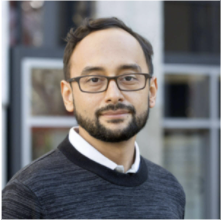
Transport of lipids across membranes is fundamental for diverse biological pathways in cells. Multiple ion-coupled transporters take part in lipid translocation, but their mechanisms remain largely unknown. Major facilitator superfamily (MFS) lipid transporters play central roles in cell wall synthesis, brain development and function, lipids recycling, and cell signalling. Recent structures of MFS lipid transporters revealed overlapping architectural features pointing towards a common mechanism. We elucidated the structure of LtaA, and showed that it functions as a proton-dependent lipid antiporter, which contributes to the adaptation of the pathogen Staphylococcus aureus to acidic conditions, common in the skin and nasopharynx of the human host. LtaA takes part in the assembly of lipoteichoic acid, important for protection of S. aureus from environmental stress, host cell adhesion, antibiotic resistance, and immune evasion. The essential role of LtaA in adjusting the pool of glycolipids available for lipoteichoic acid assembly makes it a potential target for drugs aiming to counteract antimicrobial-resistant S. aureus strains e.g., methicillin-resistance S. aureus (MRSA) and vancomycin-resistant S. aureus (VRSA). Recently, we used cysteine disulfide trapping, molecular dynamics simulations, mutagenesis analysis, and transport assays in vitro and in vivo, to investigate the mechanism of LtaA. We revealed that LtaA displays asymmetric lateral openings with distinct functional relevance and that cycling through outward- and inward-facing conformations is essential for transport activity. We demonstrate that while the entire amphipathic central cavity of LtaA contributes to lipid binding, its hydrophilic pocket dictates substrate specificity. We propose that LtaA catalyzes lipid translocation by a ‘trap-and-flip’ mechanism that might be shared among MFS lipid transporters.
01/04/2022 Camilo Perez. Biozentrum, Basel, CH